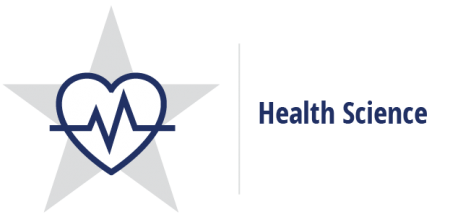Lesson Introduction
Overview of the Health Science Career Cluster
Career Pathways
There are five career pathways in this career cluster:
- Therapeutic Services
- Diagnostic Services
- Health Informatics
- Support Services
- Biotechnology Research and Development
Teacher Resources
To help students learn more about careers in Health Science, download and distribute the Health Science College and Career Planning Guide. The guide makes an excellent critical reading assignment for students enrolled in a practicum course in this career cluster.
WBL Experiences
Health Science
In non-practicum Health Science courses, WBL experiences often take the form of clinical rotations where the work experience is essentially the same for all students. Instead of a training plan agreement, the school and facility complete an affiliation agreement plus a memorandum of understanding (MOU). The MOU outlines the occupational training that will be provided. Students and their parents still need to sign an agreement that has an outline of the training attached.
Health Science Practicum
The Practicum in Health Science is appropriate for students pursuing a wide variety of career paths, ranging from nursing and emergency medical response to biotechnology research and health informatics. The practicum can be taken for two or three credits and is designed to give students practical application of previously studied knowledge and skills. Training stations for this practicum can occur in a variety of locations appropriate to the nature and level of the student's experience.
Take a moment to bookmark the TEKS for Health Science Course and the TEKS for Health Science Practicum.
Course Prerequisites
Health Science
The Health Science course is recommended for students in grades 10–12 who have completed Principles of Health Science and Biology.
Practicum in Health Science
This Practicum in Health Science course is recommended for students in grades 11 or 12 who have completed Health Science and Biology. Local education agencies may impose additional mandatory or recommended prerequisites, so long as they are applied fairly and equitably to all students.
Legal and Safety Considerations
- CPR/first aid and
- Health Insurance Portability and Accountability Act (HIPAA) implications.
Pre-Employment Requirements
Legal and safety considerations for the health science industry are countless. Most training stations for health science practicums require
- drug tests;
- criminal background checks;
- TB screenings; and
- hepatitis B vaccinations.
Curriculum Resources
Take a moment to bookmark the Texas CTE Resource Center website. Later, be sure to explore curriculum guidelines and instructional resources for the Health Science Career Cluster.
CTSOs
Career and technical student organizations (CTSOs) provide students with additional opportunities to acquire and demonstrate skills and abilities related to their chosen career field. The CTSO most closely related to careers in health sciences is the Health Occupations Students of America (HOSA). Several other CTSOs may be helpful to students pursuing careers in health science, depending on the students' specific career goals.
Take a few moments to bookmark the Health Occupations Students of America (HOSA) website to explore later.
Professional Associations
There are several professional association related to health science careers. The Texas Health Occupations Association (THOA) is the one most closely related. You may also want to check with your colleagues for advice.
Take a moment to bookmark the Texas Health Occupations Association (THOA) website to explore later.



